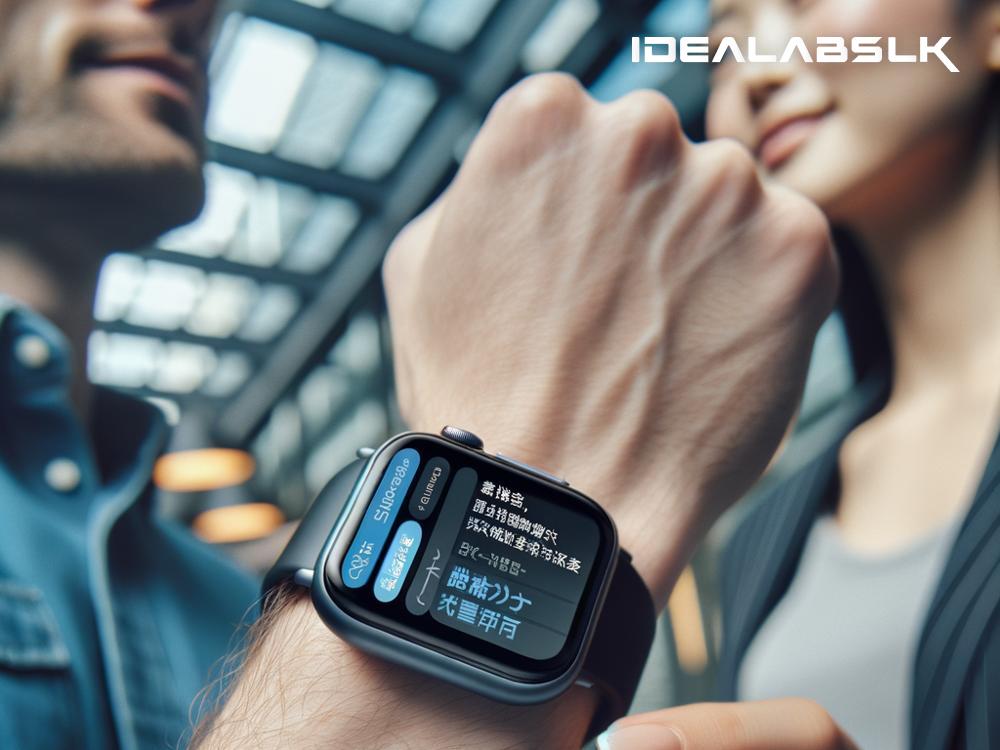How AI Powers Multi-Language Translation in Wearable Devices
In today’s world, language should not be a barrier to communication. Thanks to advances in technology, specifically artificial intelligence (AI), we are now able to overcome this hurdle more seamlessly than ever before. One of the most exciting developments in this field is the integration of multi-language translation features into wearable devices. Whether it's a smartwatch, a fitness tracker, or even smart glasses, these tiny gadgets we wear every day are becoming our personal interpreters, breaking down language barriers as we navigate our increasingly globalized world.
What is AI, and How Does It Work in Translation?
Before diving deeper into how wearable devices utilize AI for translation, let’s quickly break down what AI is. Artificial Intelligence, in simple terms, is a branch of computer science that aims to create machines capable of performing tasks that would typically require human intelligence. This includes things like understanding natural language (the way we speak and write), recognizing images, and making decisions.
In terms of translation, AI systems, especially those using a type called neural networks, mimic the way humans learn languages. They are fed vast amounts of data, including articles, books, and conversations in different languages. Over time, these systems learn to recognize patterns and nuances in language, allowing them to translate from one language to another accurately.
The Magic Inside Wearable Devices
Now, let’s talk about how this fascinating technology has found its way into the tiny gadgets we wear on our bodies.
-
Real-Time Translation: The most impressive feature that AI brings to wearable devices is the ability to translate languages in real time. Imagine having a conversation with someone who speaks a different language. With a smartwatch or an earpiece equipped with AI translation, what they say can be translated to your language almost instantly, and vice versa. This opens up endless possibilities for interaction on global travels, international business, or even just meeting new friends from different backgrounds.
-
Learning on the Go: AI in wearable devices can learn and improve over time. The more you use it, the better it gets at understanding nuances, dialects, and idioms in languages. This personalization makes the translation more accurate and the device more valuable to the user.
-
Ease of Use and Accessibility: By incorporating language translation into wearable devices, developers have ensured that this powerful feature is accessible at the flick of a wrist or the tap of a button. You no longer need to pull out your phone, unlock it, and open an app. This convenience is a game-changer for travelers and professionals alike.
-
Voice and Text Translation: While some devices focus on translating spoken words, others can help you read text in foreign languages too. For example, imagine pointing your smart glasses at a menu written in another language and seeing the translation right before your eyes. This versatility makes wearable devices equipped with AI translation an indispensable tool for anyone navigating a multilingual world.
Challenges and the Road Ahead
Despite the revolutionary potential of AI-powered translation in wearable devices, there are still challenges to overcome. For one, nuances and context can sometimes be lost in translation, leading to misunderstandings. Additionally, these devices require a constant and strong internet connection to access the AI systems that power their translation capabilities, which might not be available in every corner of the world.
Manufacturers and developers are continuously working on improving these aspects, with each update bringing us closer to overcoming these hurdles. The future of wearable technology holds the promise of even more seamless and accurate translation, with advancements in AI and machine learning leading the charge.
Conclusion
The integration of multi-language translation powered by AI into wearable devices is a significant step forward in our quest to create a world without language barriers. This technology not only makes our daily interactions more accessible but also opens up new pathways for understanding and collaboration across different cultures. As AI continues to evolve, the possibilities for its application in wearable technology are endless, bringing us closer to a future where our gadgets are not just tools, but companions in our journey through the global village.

